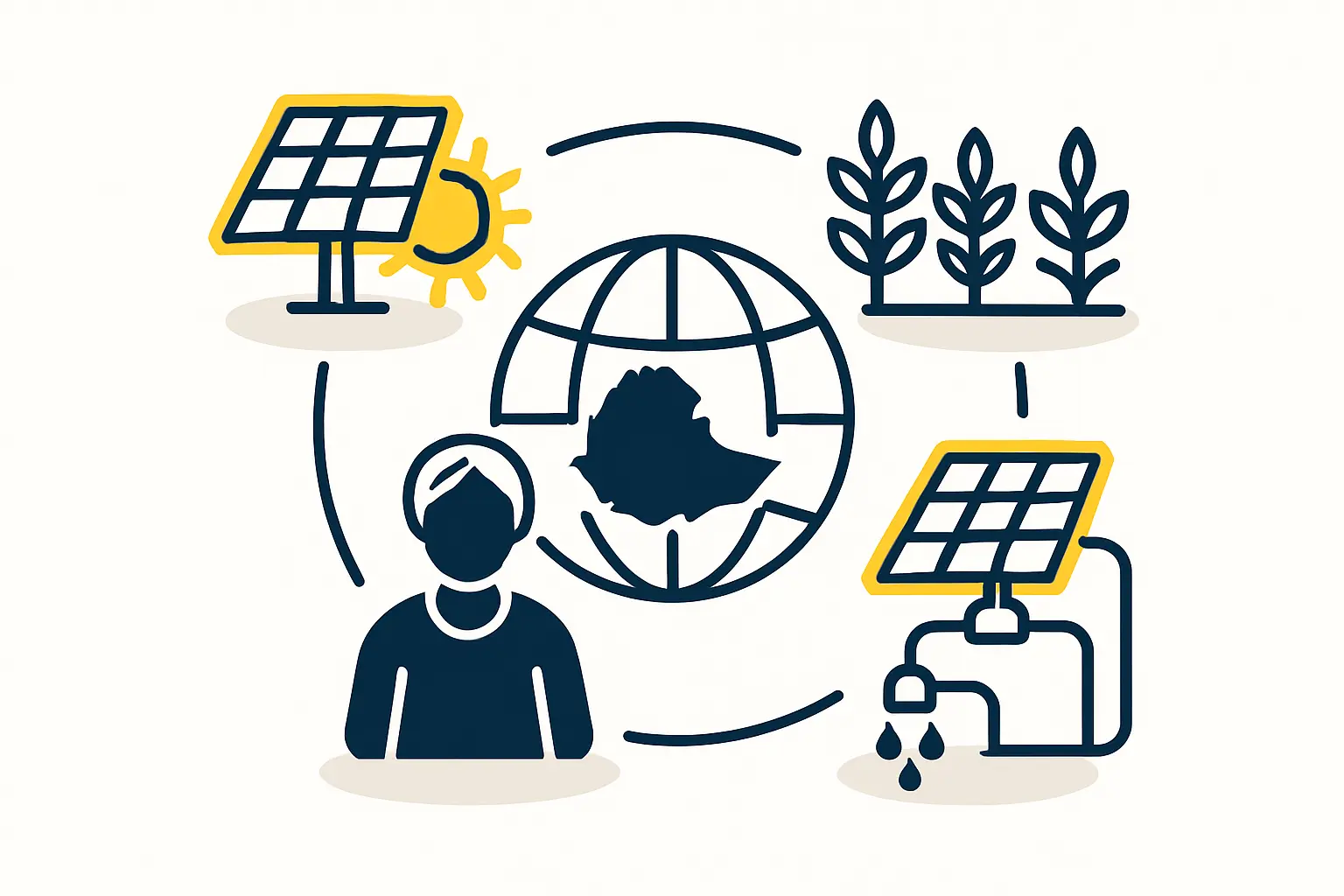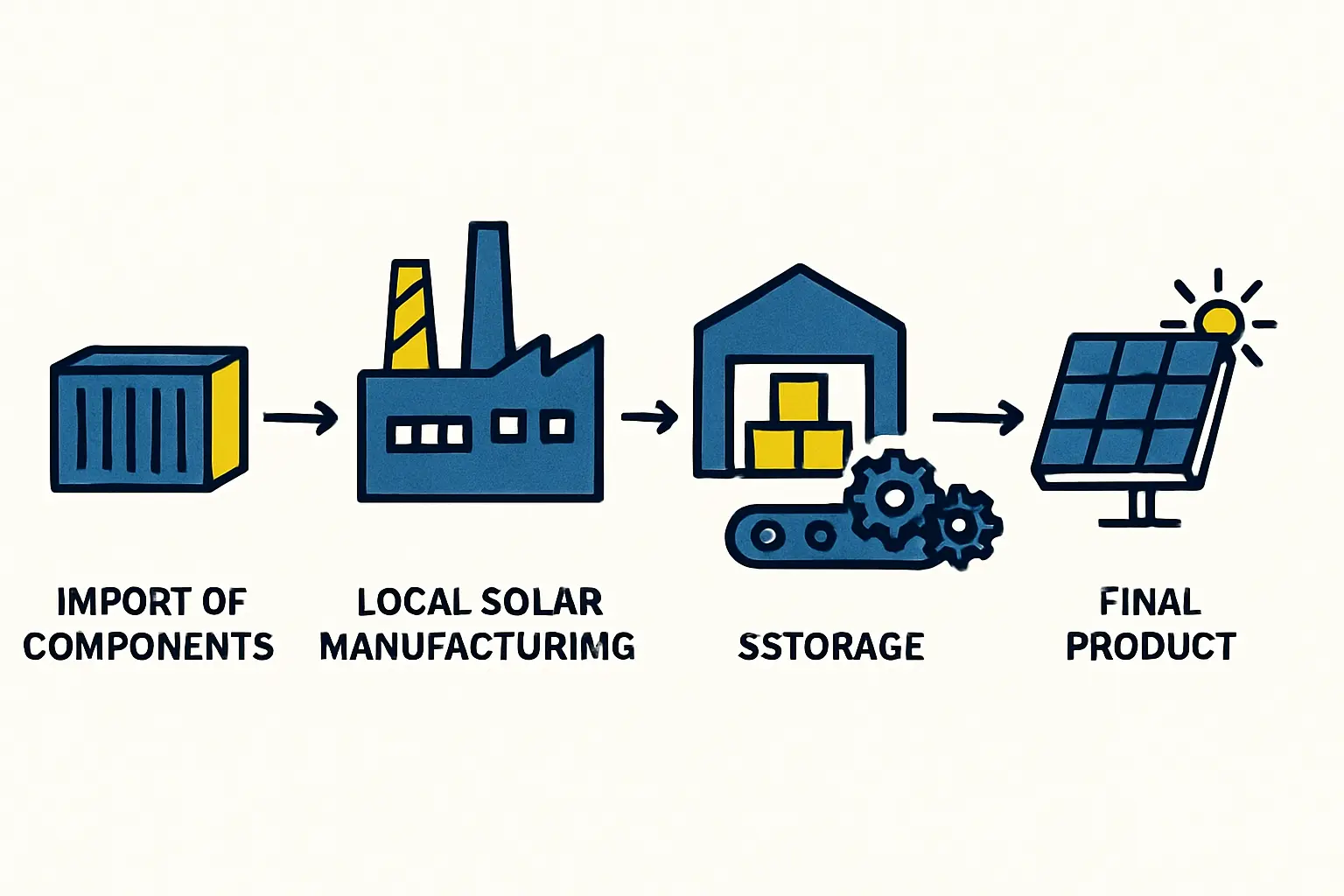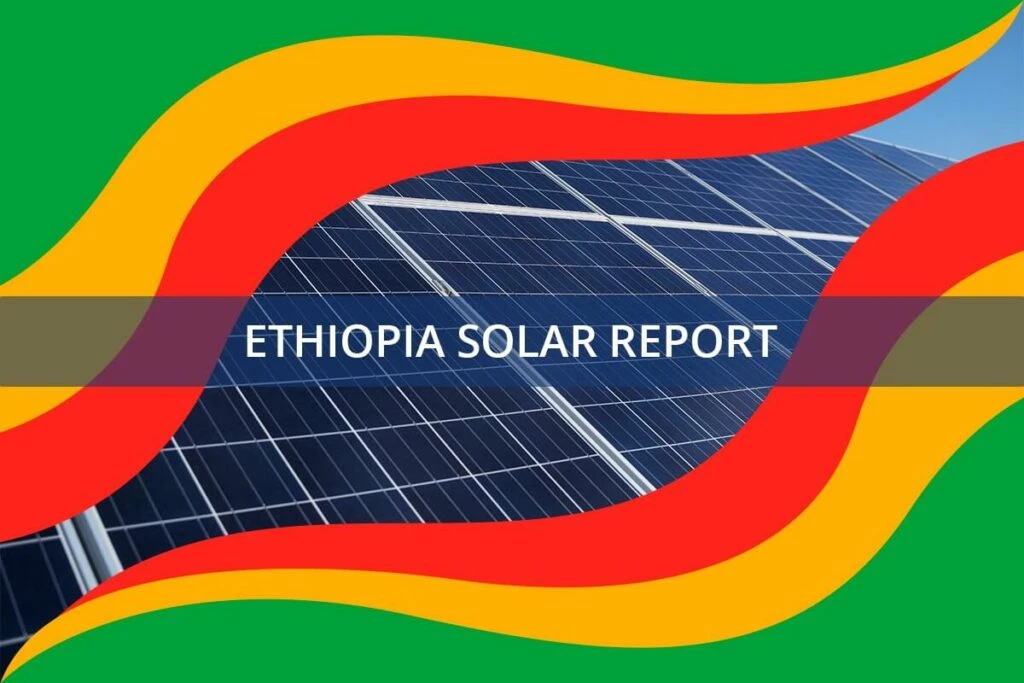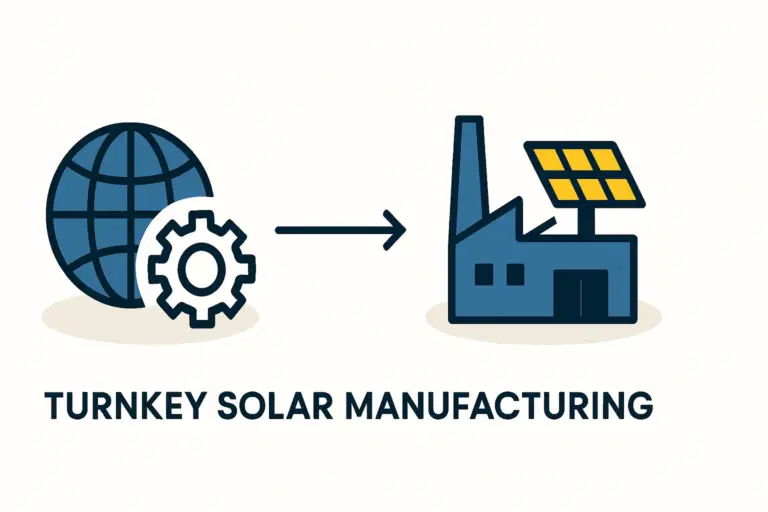With over 60 million people living without access to reliable electricity, Ethiopia represents one of Africa’s most significant untapped energy markets. While this figure highlights a profound challenge, it also presents a substantial opportunity for entrepreneurs who can provide tailored solutions.
The national goal of achieving universal electricity access by 2025 cannot be met by grid extension alone. This creates clear and urgent demand for decentralized, off-grid power—particularly in the agricultural sector that employs 75% of the nation’s workforce. This analysis explores the market for local solar module production in Ethiopia, focusing on serving the distinct needs of its rural and agricultural communities.
Understanding Ethiopia’s Energy and Economic Landscape
Understanding the fundamental drivers of Ethiopia’s economy is essential to grasping the scale of the opportunity. Agriculture constitutes approximately 35% of the country’s GDP and is the primary livelihood for the vast majority of its population. This sector, however, remains heavily dependent on seasonal rainfall, making it vulnerable to climate fluctuations and limiting productivity.
The demand for energy here is not abstract; it is directly tied to economic empowerment and food security. For a farmer, electricity means pumping water for irrigation, extending growing seasons, and increasing crop yields. For a small rural business, it means powering lights to extend operating hours or refrigerating goods to reduce spoilage. For a household, it provides clean lighting for children to study and a way to charge essential communication devices.
The government’s ambitious electrification goals, combined with the impracticality of connecting millions of remote households to the national grid, create a favorable environment for off-grid solar solutions. Investors and entrepreneurs who establish local manufacturing capabilities can meet this demand more effectively than those relying solely on imports. For a broader perspective, it is helpful to start by understanding the market for solar panels (https://pvknowhow.com/understanding-the-market-for-solar-panels/) on a global and regional level.

The Specific Demand: Agricultural and Rural Applications
The most promising opportunities lie in producing solar products designed for the realities of rural Ethiopia. Mass-produced, standardized solar panels built for large-scale solar farms are often ill-suited to the unique requirements of off-grid agricultural use.
Solar Water Pumping for Irrigation
A critical application is solar-powered water pumping. By enabling farmers to access groundwater for irrigation, solar pumps can transform subsistence farming into a more productive, commercially viable enterprise. This directly addresses food security and boosts rural incomes.
A local manufacturer can design and produce small- to medium-sized, highly durable solar modules engineered specifically to power these pumps. These panels must be robust enough to withstand harsh environmental conditions and simple enough for local technicians to install and maintain.
Powering Rural Households and Small Enterprises
Beyond agriculture, there is immense demand for small solar home systems. These systems typically provide enough power for several lights, a mobile phone charger, and a small radio or television. For millions of families, this represents a life-changing step up from kerosene lamps and candles.
Local production makes it possible to create affordable, ‘right-sized’ solar kits. A factory could assemble not just the panels, but complete packages that include a small battery, charge controller, and basic appliances. Understanding the required investment is a crucial first step for any prospective manufacturer wondering how much does it cost to start a solar panel business? (https://pvknowhow.com/how-much-does-it-cost-to-start-a-solar-panel-business/).

Why Local Production Offers a Strategic Advantage
While importing finished solar modules is an option, establishing a local assembly or manufacturing plant offers several distinct competitive advantages within Ethiopia.
Cost Reduction and Tariff Optimization
Importing finished solar modules often incurs significant tariffs. By importing raw materials like solar cells, glass, and frames and then assembling the panels locally, a business can often operate in a lower tariff bracket. This reduces the final product cost, making it more accessible to the target market.
Customization for Local Needs
A local factory can be agile. It can produce smaller, non-standard panel sizes perfectly suited for water pumps, solar home systems, and other specific applications—a level of customization difficult to achieve when ordering standard containers from large overseas manufacturers. This flexibility allows a business to directly address the most pressing needs of the community it serves.
Job Creation and Economic Development
A manufacturing facility creates skilled jobs, contributes to the local economy, and aligns with national development priorities. This can foster goodwill and potential support from government bodies. Based on experience from J.v.G. turnkey projects, factories with an annual capacity of 20–50 MW can operate with a staff of 30 to 50 employees, making a significant local impact. For those ready to explore this path, it is beneficial to understand how to start a solar panel manufacturing plant (https://pvknowhow.com/how-to-start-a-solar-panel-manufacturing-plant/).
Building a Resilient Supply Chain
Relying on international supply chains can expose a business to shipping delays, currency fluctuations, and geopolitical risks. A local production facility, even one that initially imports components, is the first step toward building a more resilient domestic solar industry.

Frequently Asked Questions (FAQ)
What size factory is most suitable for the Ethiopian off-grid market?
For this specific market, a large-scale gigafactory is not necessary. A small- to medium-sized facility with an annual production capacity of 20 MW to 50 MW is often ideal. This scale offers flexibility in product design and can be established with a more manageable initial investment, typically ranging from 1 million to 3 million euros for the machinery line.
Do I need a technical background in photovoltaics to start this business?
No, a technical background is not a prerequisite. Many successful entrepreneurs in this field come from other industries. The key is to have a solid business plan and to partner with experienced technical consultants who can guide the project—from factory planning and machine selection to staff training and quality control. The pvknowhow.com platform offers structured educational resources to help bridge this knowledge gap.
What are the primary challenges for a new solar manufacturer in Ethiopia?
Common challenges in emerging markets include navigating bureaucracy, securing reliable logistics for raw materials, and establishing effective last-mile distribution channels to reach rural customers. Access to financing for end-users is also critical. These are not insurmountable obstacles but require careful planning and strong local partnerships.
Is it better to produce glass-glass or glass-backsheet modules for this environment?
For applications requiring high durability, such as in agriculture, glass-glass modules can offer superior protection against humidity, dust, and mechanical stress. However, they are heavier and can be more expensive. Glass-backsheet (or glass-foil) modules are lighter and more common for standard applications. A local factory could potentially produce both to serve different segments of the market.
The Path Forward
The convergence of a large, underserved population, strong government support for electrification, and a dominant agricultural sector creates a compelling business case for local solar manufacturing in Ethiopia. The opportunity lies not in competing with global mass producers, but in serving specific, high-value niches that are currently overlooked.
By focusing on customized, durable, and affordable solutions for solar water pumping and rural households, an entrepreneur can build a profitable business while making a tangible contribution to the country’s economic development.
For those considering such a venture, the next step is a deeper dive into the entire process. A structured approach is essential, and a comprehensive overview can be found in The complete guide from A-Z to your own solar module production (https://pvknowhow.com/solar-module-production-a-z-guide/).




